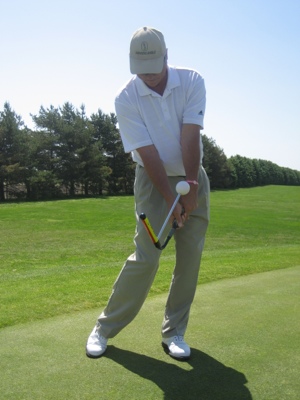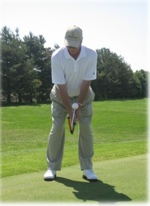I saw a series of pictures featuring Rickie Fowlers golf swing in the August issue of Golf Magazine.
Here is what I think is great about Rickie’s swing and how it can help get your swing path more from the inside. Remember that creating more of an inside swing path when you deliver the club to impact, helps turn your bad slice into a playable draw ball flight.
Below, picture labeled #2, shows how in the “move away”, that Rickie’s club head is in a position outside his hands. You may have not have realized that Rickie was in this position. This is a similar position to Sergio Garcia and Jim Furyk at their move away positions. We are all familiar with Jim Furyk’s “loopy” golf swing. I think it is a great golf swing, very effective and repeatable.
I have always taught my students that if you have problems with an outside delivery, you must learn to keep the club more outside on the move away. The principle in physics is, “for every action, there is an equal and opposite reaction”. Try it. Start the club back on a “very” outside path like Rickie’s, then at the top, loop the club backwards as it drops and really get the feel of an inside delivery of the club.
Both Fowler and Furyk are known as great ball strikers.
In the second part of this review of Rickie Fowler’s golf swing, the move to the top of the backswing will be discussed. As always practice slowly and deliberately.
If you get a chance, watch the Amazing Angle training video on this website. Pay particular attention to how the Angle can help you get this outside to inside feel in your golf swing. It will feel goofy, but I bet your golf swing becomes more powerful, and you will learn to control your ball flight.


